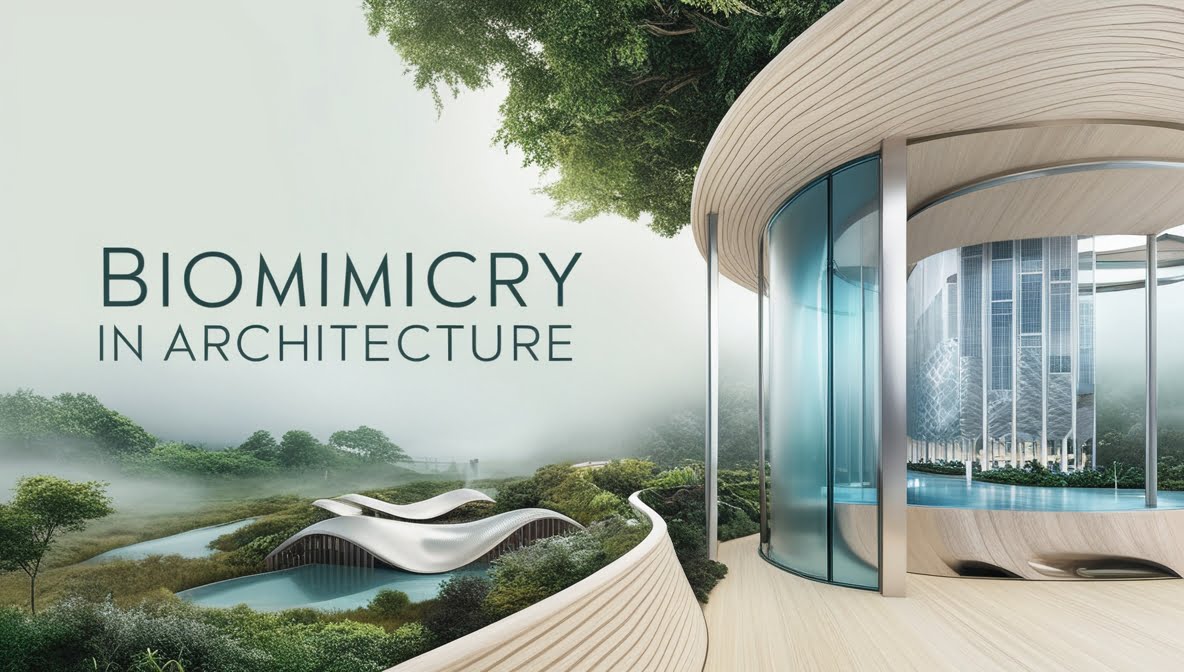Biomimicry in architecture is revolutionizing the way we think about buildings. Instead of imposing rigid, artificial structures on the environment, architects are now looking to nature for sustainable, efficient, and beautiful design solutions. This approach isn’t just about mimicking natural forms – it’s about understanding and applying the underlying principles that make natural structures so effective.
From energy-efficient cooling systems inspired by termite mounds to self-cleaning facades modeled after lotus leaves, nature-inspired designs are transforming our built environment. These innovations aren’t just visually striking; they’re also helping create more sustainable, resilient, and livable spaces.
What are some standout examples of biomimicry in architecture?
Eastgate Centre, Harare, Zimbabwe
- Inspired by: African termite mounds
- Feature: Self-regulating temperature control system
- Benefit: Uses 90% less energy for ventilation than conventional buildings
Beijing National Aquatics Center (Water Cube)
- Inspired by: Soap bubbles
- Feature: Efficient structure and unique aesthetic
- Benefit: Reduced material use and energy-efficient design
30 St Mary Axe (The Gherkin), London, UK
- Inspired by: Sea sponges and anemones
- Feature: Spiraling atrium for natural ventilation
- Benefit: Reduces energy consumption for air conditioning
Esplanade Theatre, Singapore
- Inspired by: Durian fruit
- Feature: Spiky exterior sunshade system
- Benefit: Reduces heat gain while allowing natural light
Qatar Sprouts, Doha (Proposed)
- Inspired by: Desert plants
- Feature: Self-shading design and water collection system
- Benefit: Adapts to harsh desert climate, conserves water
CH2 Building, Melbourne, Australia
- Inspired by: Tree bark and bronchial systems
- Feature: Biomimetic cooling towers and facade
- Benefit: Significantly reduced energy consumption and CO2 emissions
Lille Metropole East, France
- Inspired by: Human skin
- Feature: Responsive facade that adapts to environmental conditions
- Benefit: Optimizes indoor comfort and energy efficiency
These examples showcase how biomimicry can lead to buildings that are not only visually striking but also highly functional and environmentally friendly.
How does biomimicry improve building performance?
Biomimicry in architecture goes beyond aesthetics. It’s about creating buildings that perform better in various ways:
- Energy efficiency: By mimicking natural cooling and heating systems, buildings can significantly reduce energy consumption.
- Water management: Nature-inspired water collection and filtration systems can help conserve and reuse water.
- Structural integrity: Biomimetic structures often require less material while maintaining strength.
- Adaptability: Buildings inspired by living organisms can better adapt to changing environmental conditions.
- Sustainability: Natural systems are inherently sustainable, and mimicking them can lead to greener buildings.
What challenges do architects face when implementing biomimicry?
While biomimicry offers exciting possibilities, it’s not without its challenges:
- Complexity: Natural systems are often intricate and difficult to replicate in built structures.
- Scale: What works in nature might not always translate directly to building scale.
- Materials: Finding or developing materials that can mimic natural properties can be challenging.
- Cost: Innovative designs and materials can sometimes increase initial construction costs.
- Regulations: Building codes and regulations might not always accommodate novel biomimetic designs.
How can architects start incorporating biomimicry into their designs?
If you’re an architect interested in biomimicry, here are some steps to get started:
- Study natural systems relevant to your climate and building type.
- Collaborate with biologists and environmental scientists.
- Focus on function over form – understand why natural structures work.
- Use biomimicry databases and resources for inspiration.
- Start small – incorporate biomimetic elements into existing designs before tackling full-scale biomimetic buildings.
What’s the future of biomimicry in architecture?
The future of biomimicry in architecture looks promising. We’re likely to see:
- Smart materials: Self-healing concretes, shape-shifting facades, and other adaptive materials.
- Living buildings: Structures that not only mimic but incorporate living systems.
- Urban ecosystems: Cities designed to function like natural ecosystems, cleaning air and water while producing energy.
- AI and biomimicry: Using artificial intelligence to identify and apply relevant natural solutions to architectural challenges.
Biomimicry in architecture is more than a trend – it’s a fundamental shift in how we approach building design. By looking to nature as a mentor, architects can create structures that are not only beautiful and functional but also in harmony with the natural world. As we face increasing environmental challenges, these nature-inspired solutions may hold the key to creating a more sustainable built environment.





